Textile
- Home
- Nishijin-ori Textile
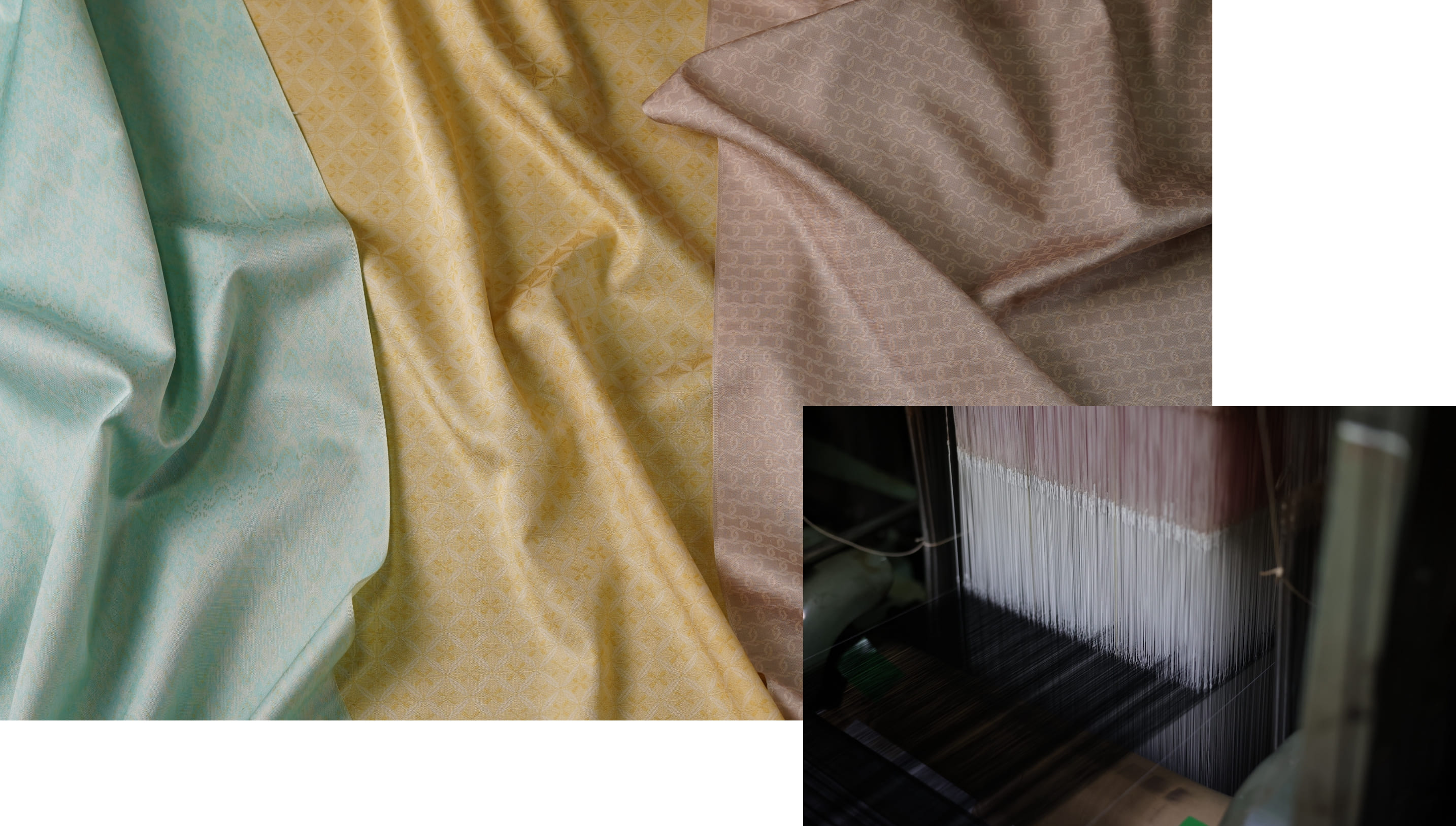
Textile Production Utilizing Tamura-ya's Nishijin-ori Techniques to Create Obi, Kimono, and More
We at Kyoto Nishijin-ori Tamura-ya not only produce obi and kimono fabrics,
but also textiles in various collaborations with the Nishijin textile techniques we have cultivated over the years.
We specialize in making fabrics with a depth that cannot be expressed using the world “textile” alone.
Textiles created through the selection of yarns, weaving, and the harmony of various processes greatly expand the possibilities of their expression.
Our products, created through back-and-forth with several designers, are each made to be totally unique.

Production Process
The following is an introduction to the textile production process on an OEM basis.
-
01Interview
We will ask you about the ideas and concepts behind your product. Please let us know the details of what kind of design and pattern you would like to produce.
-
02Design Confirmation
This step is to confirm the final design you wish to make. We will create a proposal on what method is best suited for what you want to express, the production method, the selection of materials, and the cost of the project.
-
03Estimate
We will then provide you with an estimate for the item’s production based on the details we have discussed. We will also inform you of how long production will take, minimum lot size, and any additional costs.
-
04Sample Production
We will create a sample piece based on the finalized specifications that will allow you to check the color and texture of the fabric.
Here, you can see the actual textile and its design. Detailed modifications can also be made at this stage. -
05Production
We will manufacture the textile fabric according to the specifications determined in the sample. If processing is required, it will be done at this time.
-
06Delivery of Goods
We inspect and deliver the produced textile fabrics or processed products. We can also go on to produce additional lots or products with different specifications if desired.
Creating Fabrics
Sharing Textiles from Kyoto Nishijin with the World
Tamura-ya's textiles are carefully woven through a process of trial and error using techniques cultivated in Kyoto's Nishijin district.
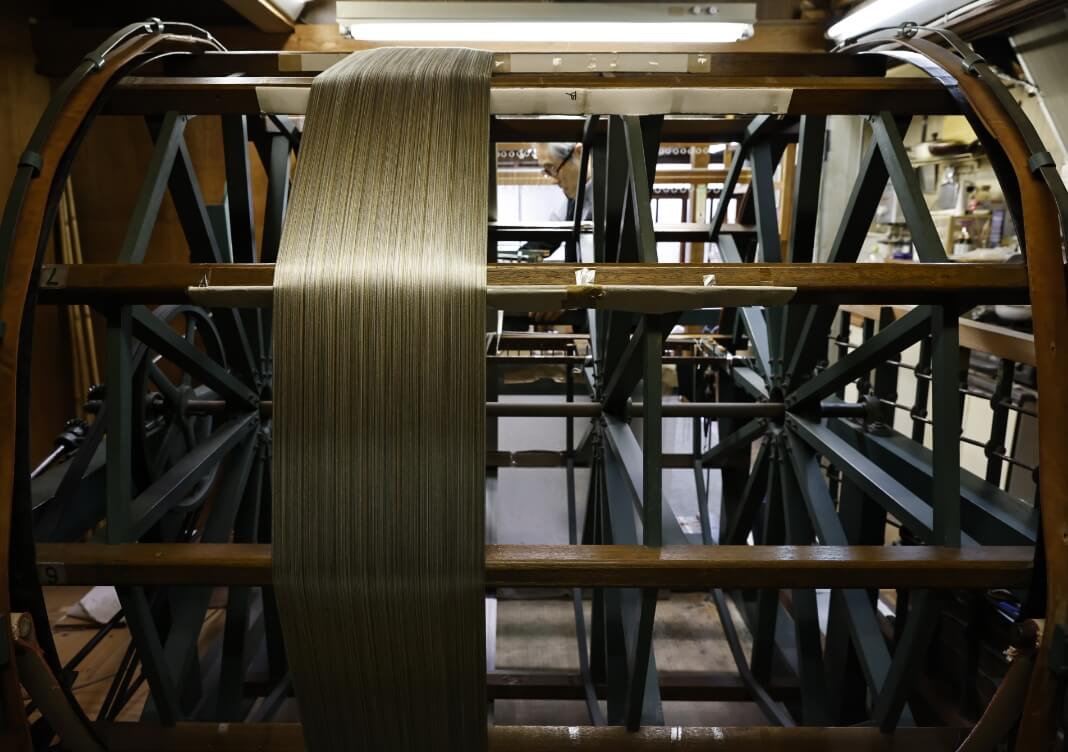
Craftsmanship
The textiles we create are the result of the skills and techniques of various craftsmen.
The textile production of Nishijin-ori textiles in Kyoto involves many production processes, with each being carried out by craftsmen who have inherited these traditional techniques that have continued over many years.
The textiles created by utilizing the traditional techniques of each field are used not only for kimono, but also for Western clothing, tableware, furniture, and more, creating a new world of expression.
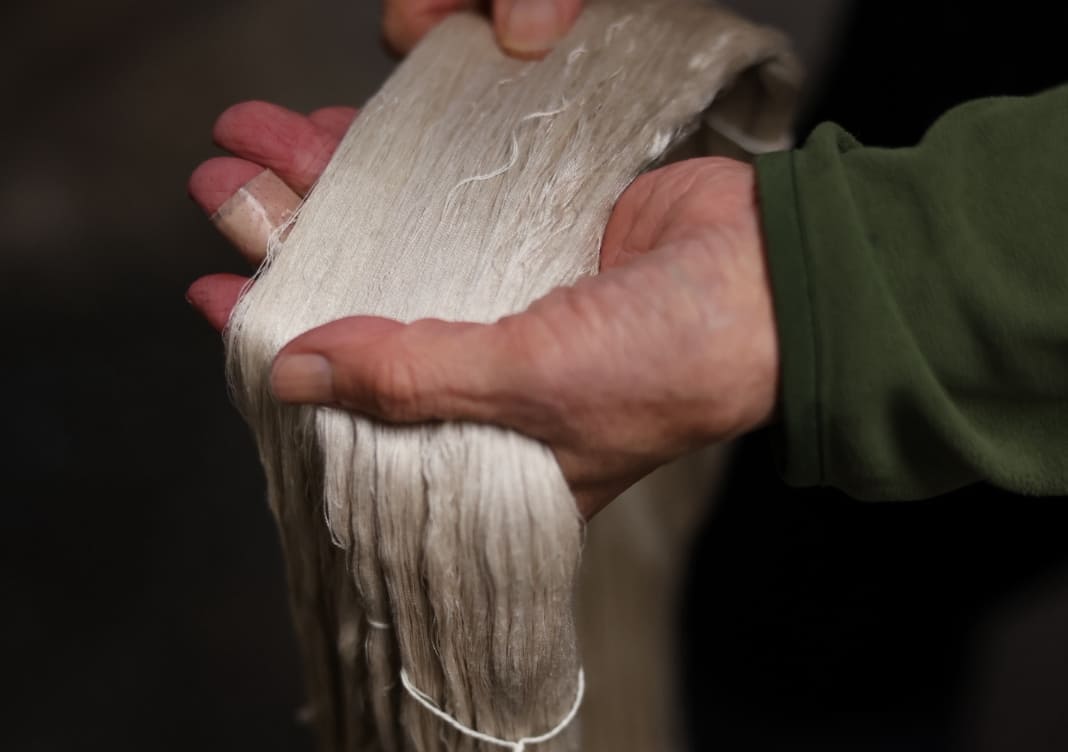
Highest quality materials
The use of high-quality materials is essential in the production of high-quality textiles. The same design can have a very different look if the intentions and weaving techniques are different. We are expanding our range of expression by employing a variety of materials and new techniques. For even a single thread, we are able to propose what kind is best suited for any particular type of expression based on our discussions with the customer.
Expression in Hikibaku Technique
Gold or silver foil is stretched thin and applied onto lacquer-coated thin Japanese washi paper, before being smoked over a long period of time. It is then cut into strips less than 1 mm wide and woven into the obi’s structure. This entire technique is called “Hikibaku.” The technique of weaving this ultra-fine foil so that it does not turn inside out is carried on by only a few remaining craftsmen.
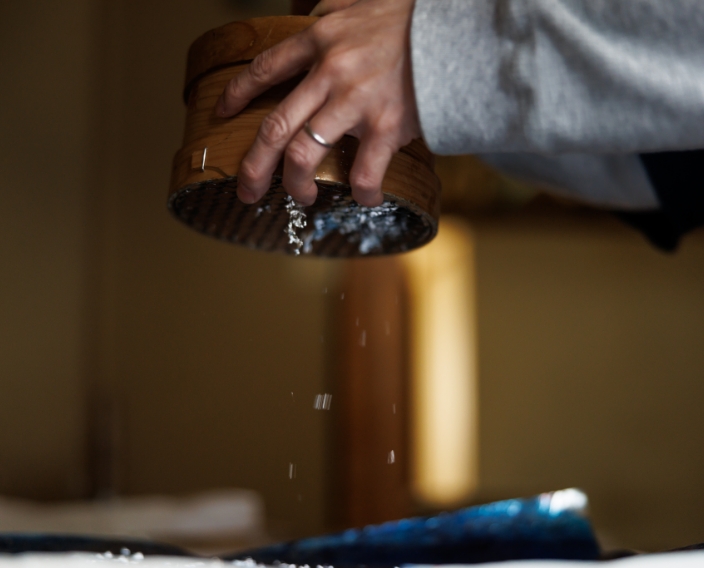
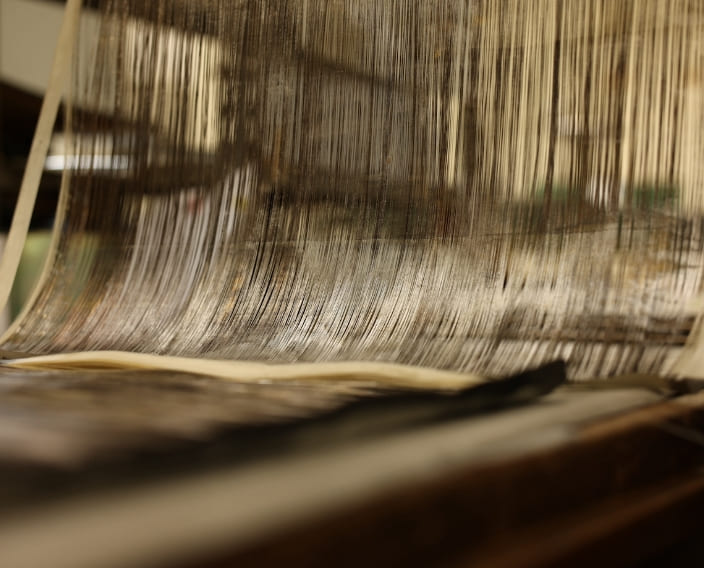
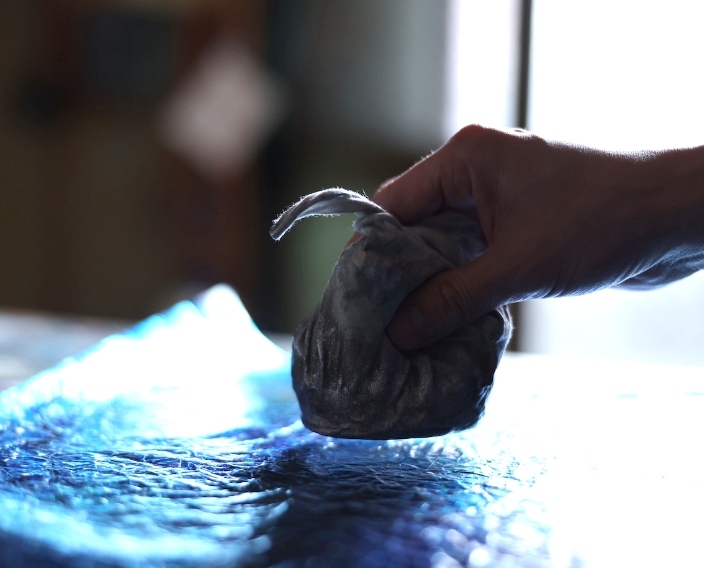
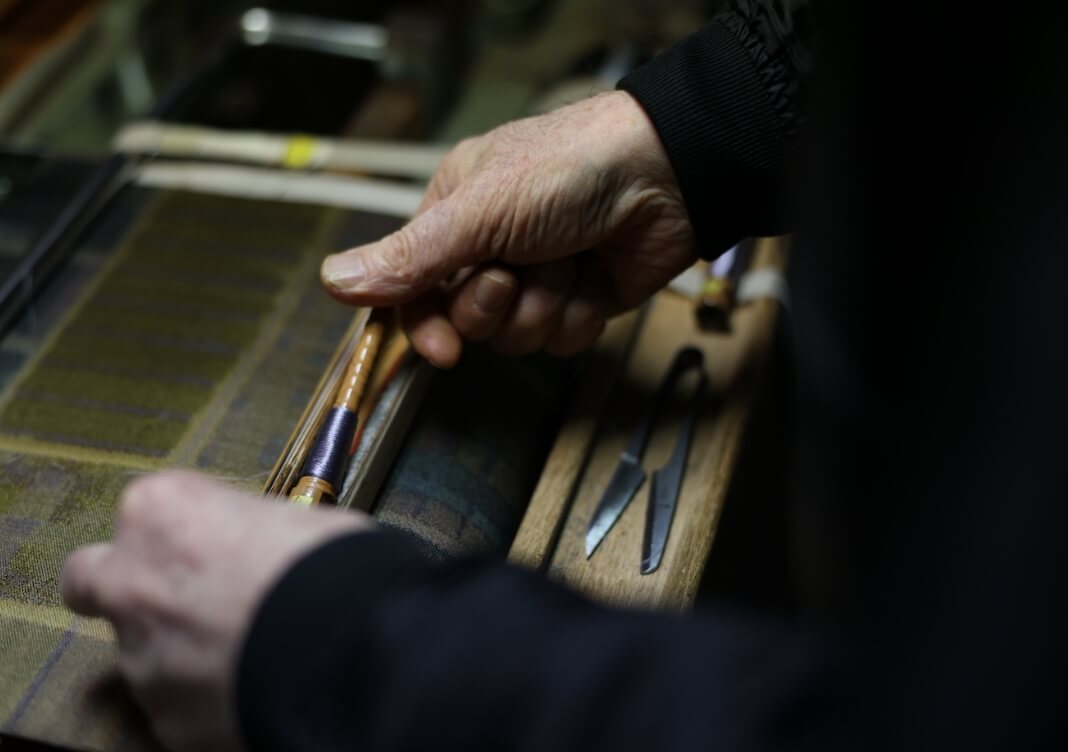
Commitment to Weaving
The weaving process, where all other processes intersect, is a very important element of production. We are able to produce high quality textiles by combining various weaving processes with techniques we have cultivated over many years. The techniques behind Nishijin-ori are often thought to be used only for Japanese-style clothing, but by combining them with Western-style clothing and accessories, their range of expression can be expanded infinitely. We are happy to suggest what kind of weaving technique is best suited for the textile you wish to make.
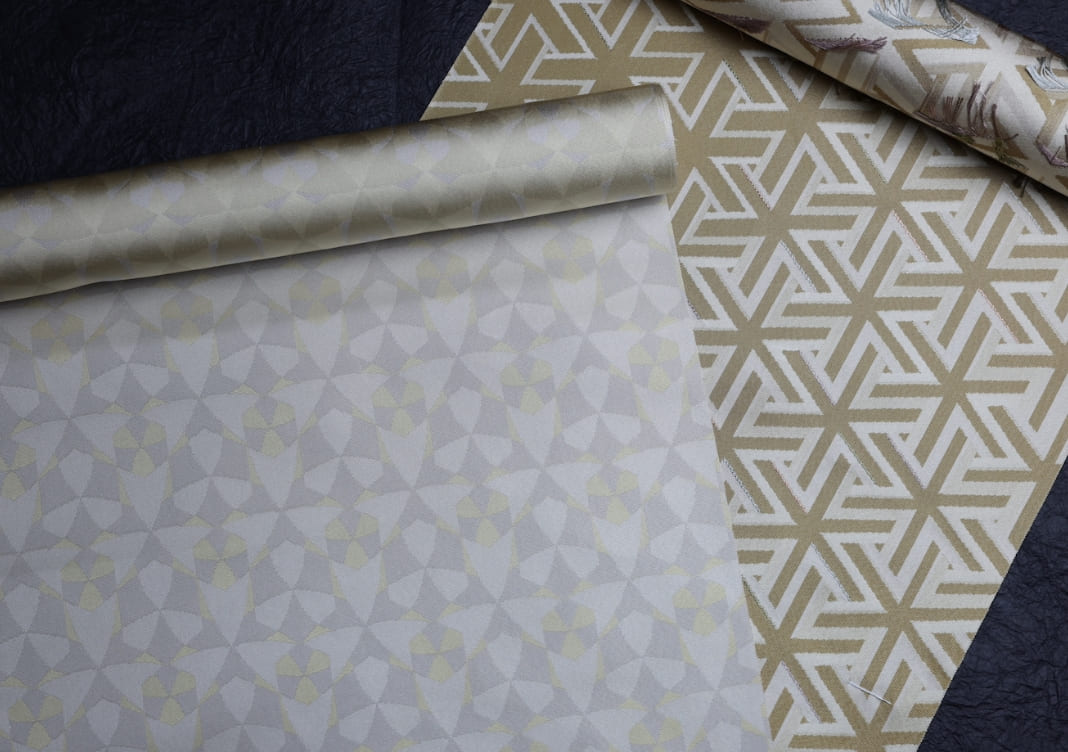
Traditional Nishijin-ori Patterns
Being a traditional industry in Kyoto, various traditional patterns have been handed down in Nishijin-ori and we can offer suggestions when it comes to pattern creation.
The expression of the traditional patterns can be greatly changed by arranging it into something more modern. Whether the design is your own or you desire a design proposal, we can help.
Case Studies
Textiles Produced
Many examples of Tamura-ya's textiles are not open to the public,
so please feel free to contact us using the form below to inquire about seeing actual samples.
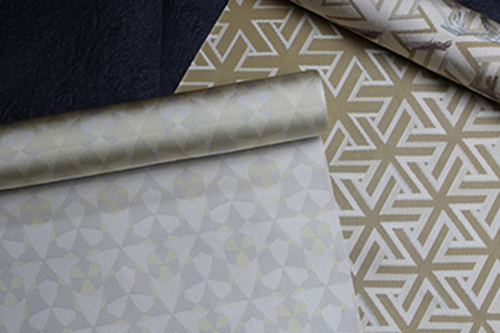
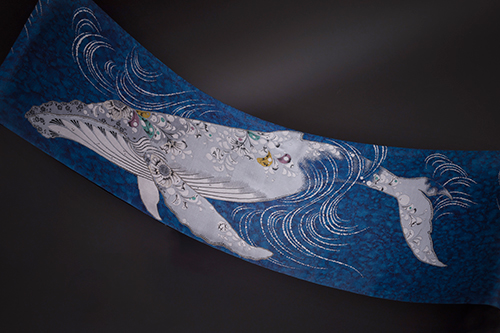
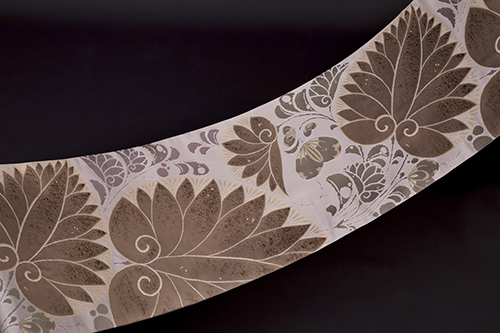
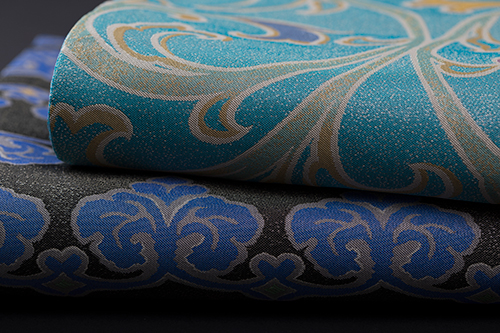
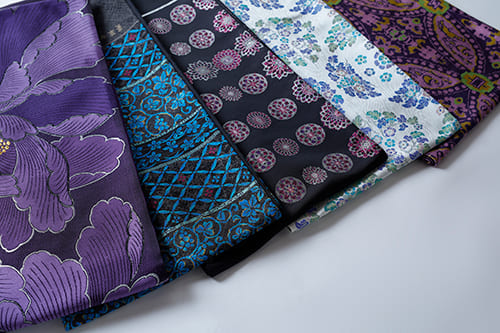
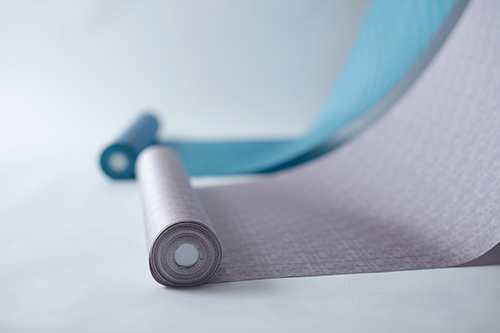
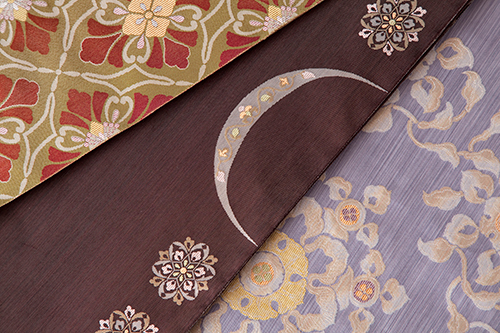
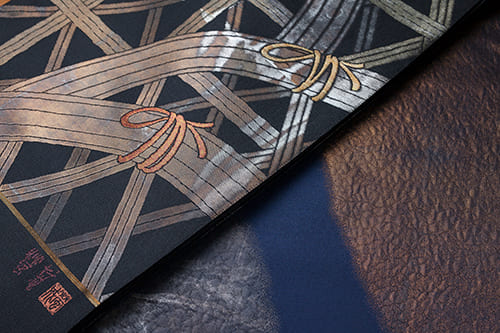
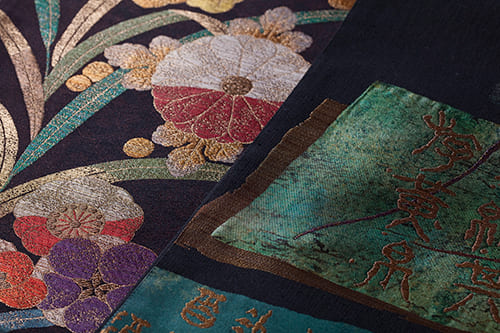
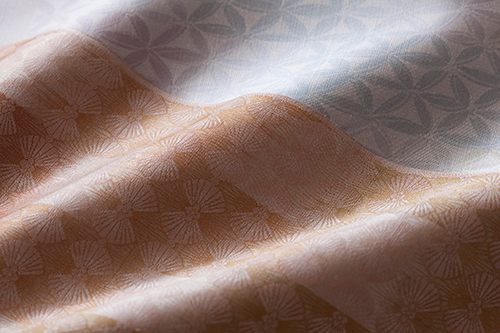
Original Fabric Production
For those considering textile production
The word “textiles” covers a wide range of fields.
Our textiles are created by craftsmen who are experts in each process and each field.
Therefore, we are able to provide detailed explanations and proposals to those who are creating their own original fabrics for the first time.
Please don’t hesitate to contact us even if you are unsure if your idea is technically possible or not, or if you are unsure about your budget.

